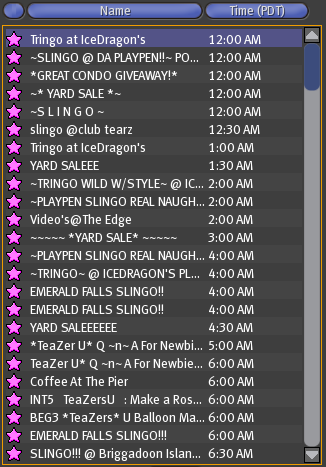I finally got to try the llhttprequest, it was in a 10 minute gap in the day, when my daughter who is 3 today decided she only wanted to play with Grandad.
Anyway, I did not intend to do things ‘properly’ but I did want to see if the new outbound http would let me add function to what I had already. Extend rather than port the XML-RPC inbound code I already had.
The existing “legacy” or “chesished” second life objects were 4 different instances of objects with my weatherrss script in them. Just to explain the objects in second life can and could open a channel making them available to be talked to from outside of second life. The outbound mechanism was only email.
Anyway this led me to create these objects, and cut and paste their unique ids into a piece of externally hosted PH. This PHP did a call to a well known weather service and then sent it into SL to the set of unique ids I had added to it. One click 4 objects get updated
The problem was triggering this, getting second life to send an email as a way to ask for a refresh was not great. I had a webpage with various URLs that were precanned calls to my PHP with various country location parameters.
Anyway the new 1.10 Second Life let me put a call in an object in an llhttprequest. So I simply got an object to use the same URLs as in the original webpage.
I now have an object in SL that can take user input and as my PHP to update all the various weather instances I have.
Obviously there are better 2 way mechanisms, like why bother using the XML-RPC at all, but this one liner let me exploit what I had and gain massive extra function.
It would now be very easy to create a map or globe with hotspots. Trigger external events by avatar presence and sensor events etc. All very useful.



